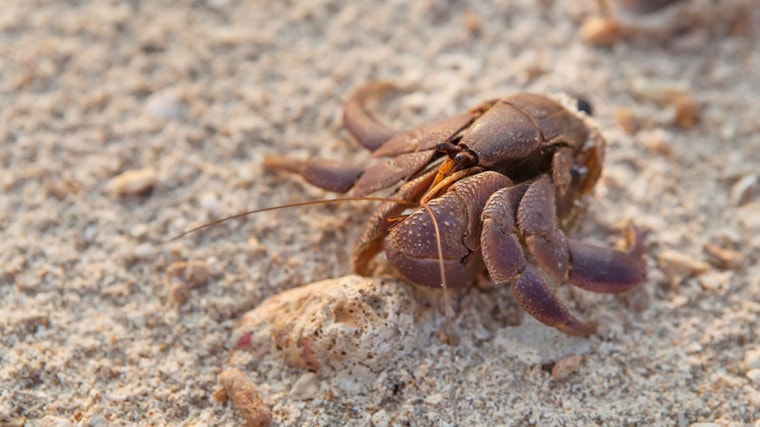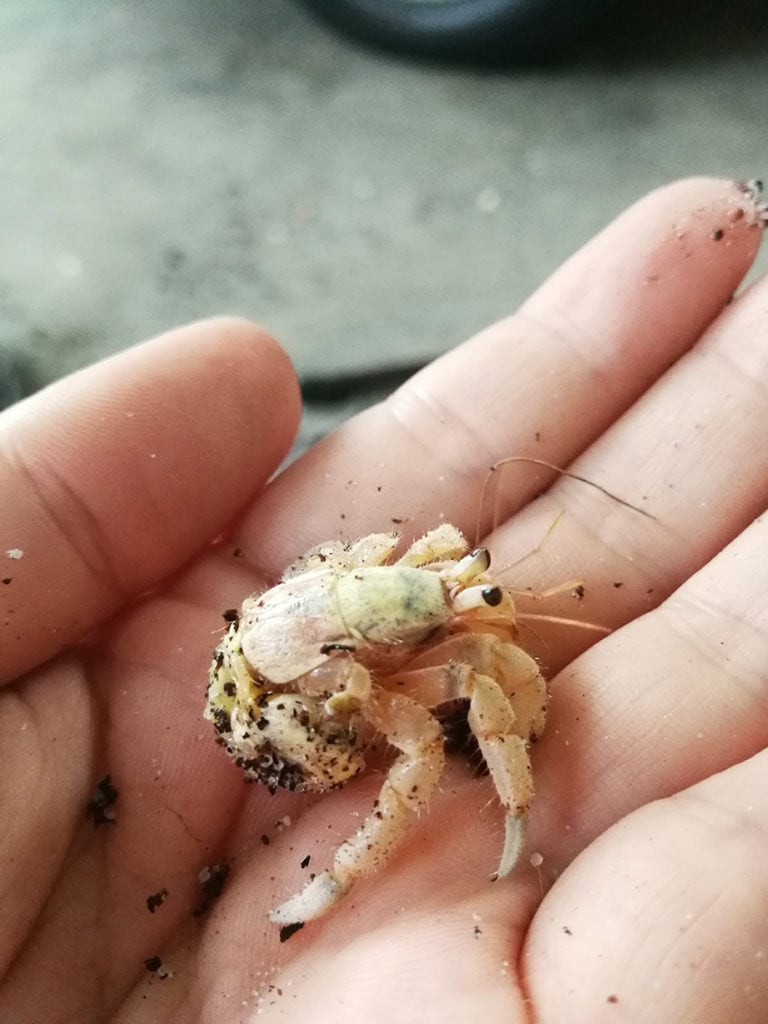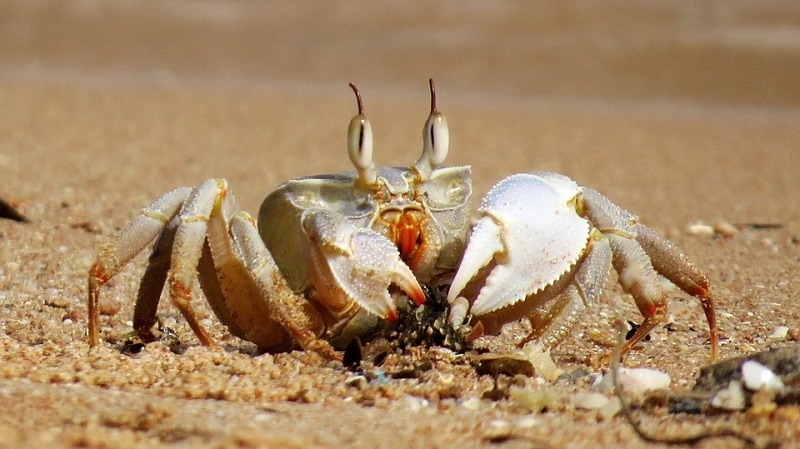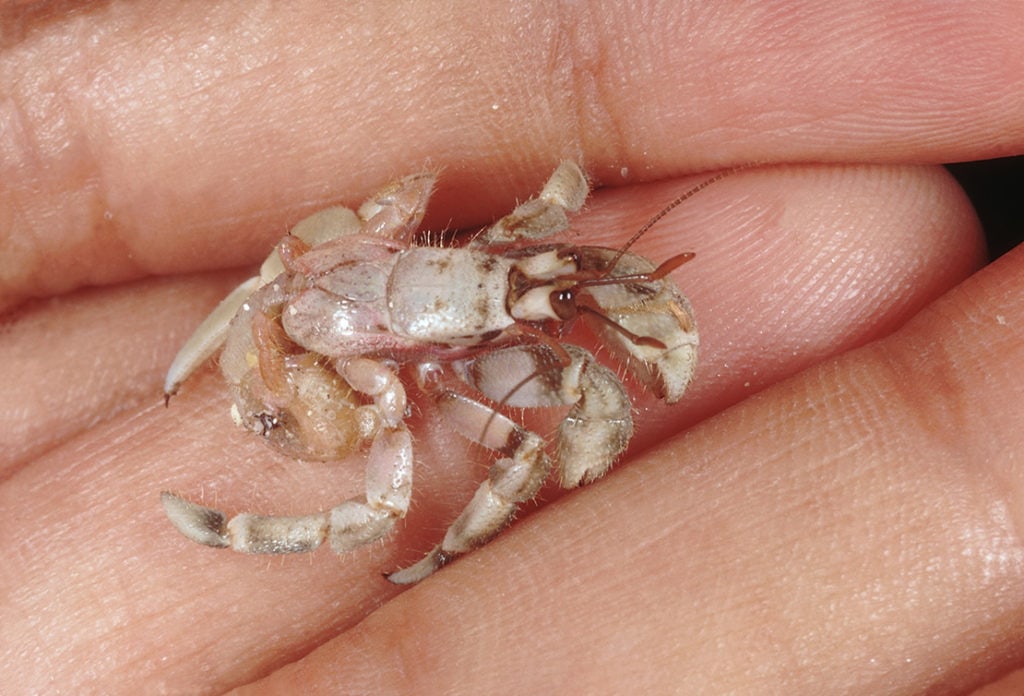
One of the cutest things about hermit crabs might be the way they treat their shells. Have you ever seen what happens when one hermit crab is ready to switch shells? Multiple crabs line up, taking turns trying on shells according to size until they all have the perfect fit—talk about teamwork!
But what happens when you come home to find that one of your hermit crabs is out of its shell? Is this dangerous? Before you panic, let us help you figure out how to assist your hermit crab.
The 5 Reasons a Hermit Crab Might Leave their Shell
Surprisingly, hermit crabs can leave their shell for several reasons. Most of them are environmental, but it might also be something to do with their health. Let’s take a look at why this happens in the first place so you can prevent it in the future.
1. Stress
As unfortunate as it is, during the shipment and distribution of hermit crabs to pet stores, they can make crabs very unhealthy. If the hermit crab that you purchased is highly stressed out, it could cause them to exit their shell to die.
This can happen due to physical damage, shipment issues, and improper care.
2. Shell Fighting
If you have multiple hermit crabs growing at different rates, but you don’t have enough extra shelves to accommodate them, it can lead to shell fighting. This process happens when hermit crabs will start to battle each other for their shell, which can be very dangerous.
It can also happen when a hermit crab leaves their shell to find a more suitable one, and another steals the one they were using. With no shells that fit, your hermit is out of luck until you intervene.

3. Irritation
Hermit crabs are exposed slightly and can get debris and other irritants in the shell. It could be that the hermit crab is trying to get rid of the annoyance by exiting the shell. You need to clean the inside appropriately to make sure it’s free of any small particles.
4. Unsuitable Environment
Hermit crabs are extremely sensitive to their environment. They require a certain level of moisture and proper temperature in their cage to be happy. If it is too hot or cold, other environmental factors are playing in that make them uncomfortable. Exiting their shell can be expected in these scenarios.
Hermit crabs are ectothermic, which means they need various temperatures in their environment to self-regulate. Like many other cold-blooded creatures, they require a warm and cool side of their tank. They can move freely in between as they wish, depending on what they need.
The hot end of the cage should not exceed 85° F. The cool side of the cage should not drop below 70° F. These two components need to be available to them at all times.

5. Death
At some point, your beloved hermit crab will have to say goodbye. When they pass, they fall from their shell. It might be challenging to pin down exactly what happened, but it can occur due to age or undetected sickness.
How to Get a Hermit Crab Back in the Shell
Note: If your hermit crab is molting, skip this section and read the next subheading.

Before you attempt to put the hermit crab back in its shell, you have to understand that this is a sensitive process. Their bodies are incredibly fragile, so handling them can damage them and may even cause death. So it’s imperative to handle them correctly.
Before you do anything at all, gently pick up the hermit crab behind its back legs or scoop them gently with a spoon or other scoop. Examine them thoroughly to check for any external wounds or abnormalities. If everything looks as it should, it’s time to work on the shell.
Boil the shell in dechlorinated water to remove any bacteria or debris on or in the shell.
Get a container just big enough for the crab and shell. Put more dechlorinated water in the bottom to fill it slightly—just enough to cover the bottom. That will allow your crab to have the moisture necessary to fit back inside comfortably.
Place the crab and the shell in a container that’s big enough just to fit those two things. Monitor it visually, but do not disturb your crab—it can take a while for them to re-shell.
Molting Hermit Crabs
It would be best if you didn’t handle a molting crab, as they are extra soft and sensitive at this time. Instead, use the bottom dome portion of a two-liter bottle to place over the top of them. Poke some holes in the bottle for ventilation and place two suitable shells in the container with them.
You have to keep an eye on your crabby, as they may try to dig down into their substrate. If this happens, take a scoop and dig deep into the substrate to lift them to the surface without touching them.
Do not add any additional water. Its body is not in the right state to handle the excess moisture.
Soon, once they regain their strength, they will climb back inside of the shell. Molting takes a lot of energy, leaving your crab very tired and vulnerable. Make sure to watch them frequently to make sure they are safe.

Shells Are Essential
If you own a hermit crab, you know how fond they are of hiding in their shells. It seems like every time you move a little bit too fast—they pop right back in. So, you know how important a sense of security their shell provides.
Without this protective layer, its exoskeleton is exposed and highly vulnerable to outside elements. So, if you come in to check on your crab and find that they have exited their shell, you might freak out for a minute.
But don’t jump to conclusions just yet. We’re going to explain why a hermit crab leaves their shell and what you can do to help them back in.
What Does a Shell Do?
Your hermit crab’s shell provides a protective barrier around its sensitive exoskeleton. Not only does it protect them from damage, but it also prevents their body from drying out. Without a shell, it leaves your hermit crab completely vulnerable to heat, light, and air. They can quickly die without it.
It is common for crabs to leave their shell while molting. Once they shed their exoskeleton, they will re-shell themselves.

Final Thoughts
The biggest takeaway here is not to panic. Stay calm and respond to the situation as needed. If you own hermit crabs, this is very possibly going to happen at one point. Learning how to re-shell your crab will allow you to assist them without causing harm or making the situation worse.
Remember, if they’re molting, don’t handle them directly. Just make a small sanctuary so they can do it themselves when it’s time.
Related Reads:
Featured Image Credit: Tereshchenko Dmitry, Shutterstock








